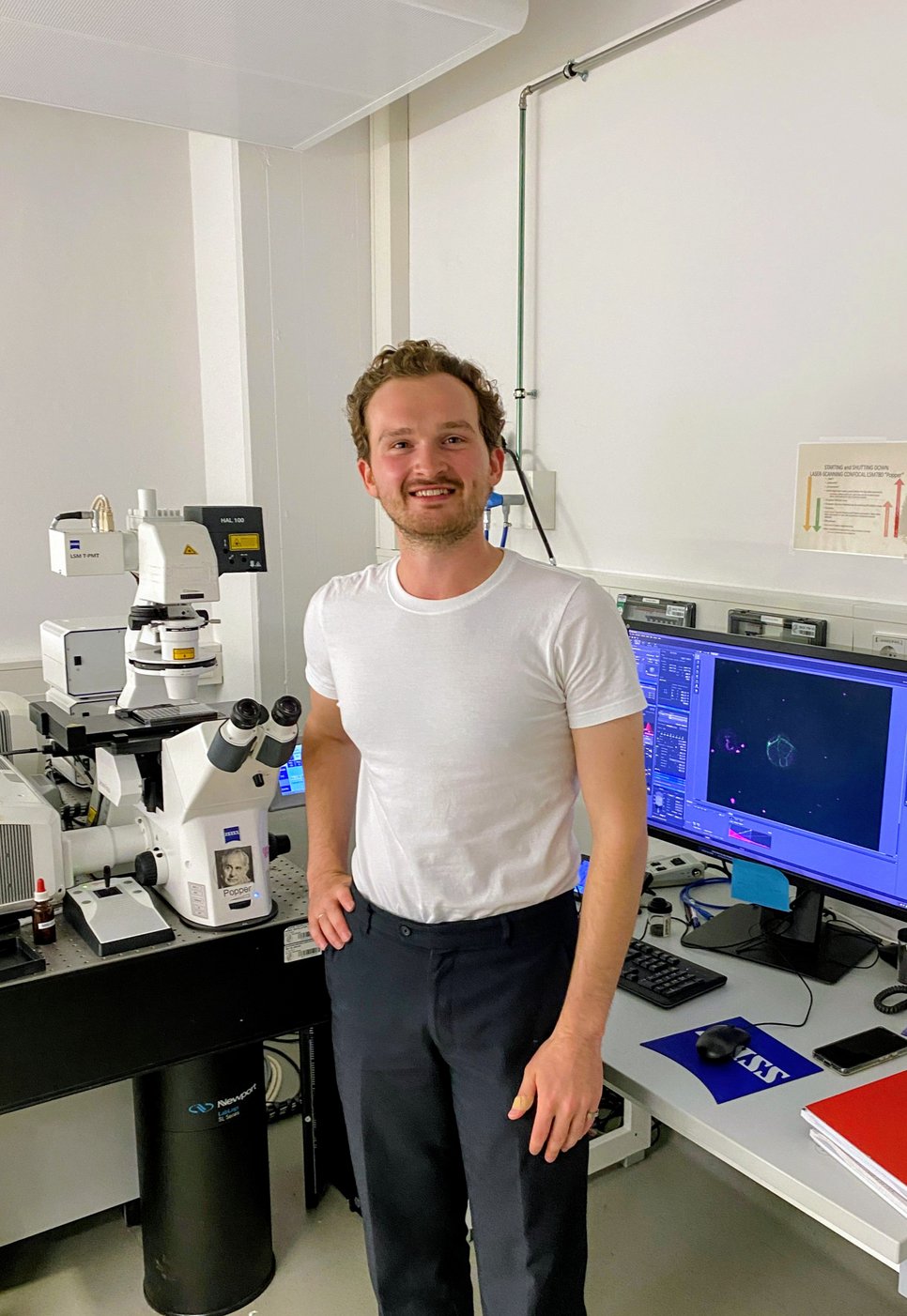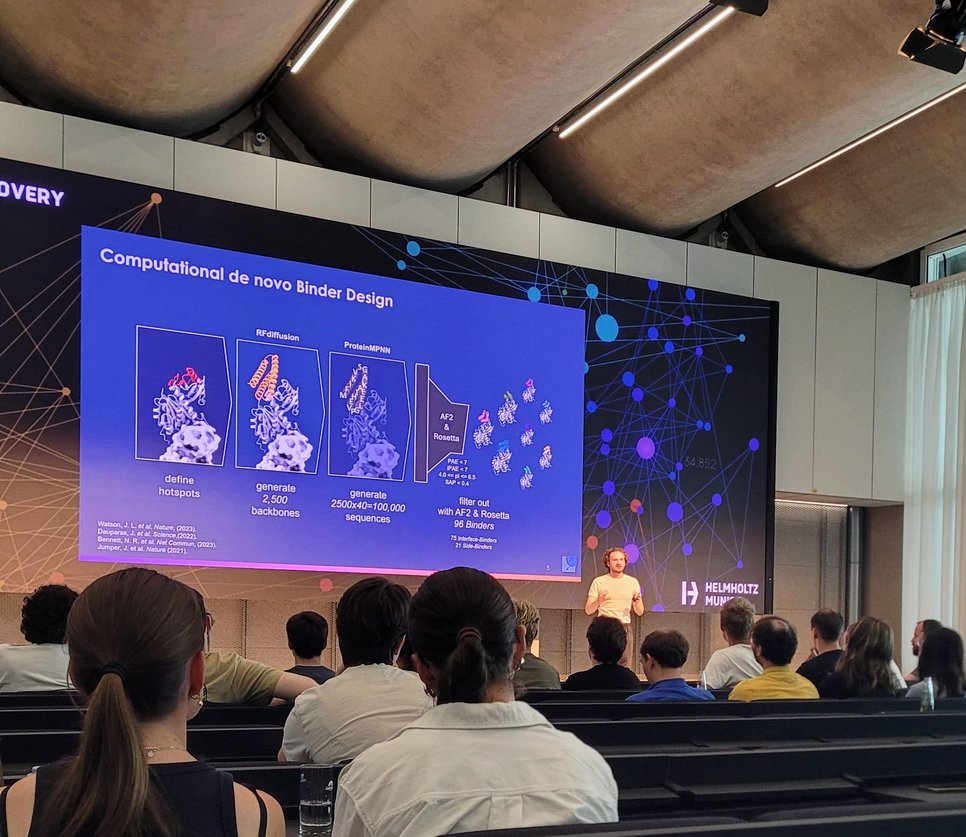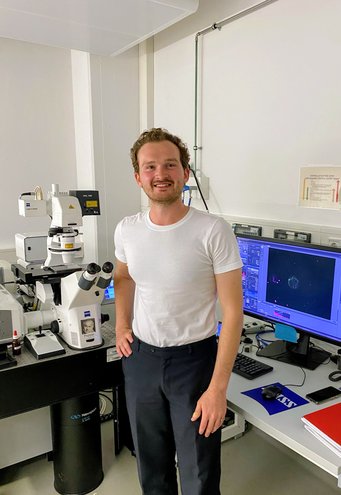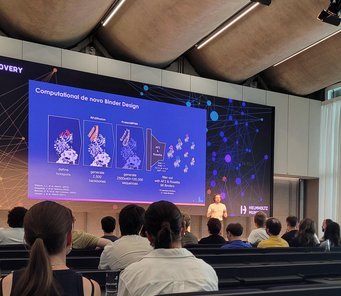Stammtisch with Proteins
Hunting for Protein Binders: Bridging Wet and Dry Lab Approaches
Andrey explored his research passions during his lab rotation in a collaborative project led by MtL Fellows Hendrik Dietz and Petra Schwille, which took him into the rapidly developing world of protein design. The initial spark evolved into lasting interest and he found his niche, continuing in Petra's lab for his Master thesis and soon his PhD.

I was initially trained as a protein biochemist and became deeply intrigued by protein design, a field that provides tools to engineer existing proteins or create entirely new ones (de novo) for specific applications. My interdisciplinary training during the MPS Matter to Life coursework further fuelled my enthusiasm and encouraged me to shift gears toward this exciting area. Around the same time, Munich was emerging as a hub for protein design, with a rapidly growing community of researchers. Motivated by this environment, I decided to move to Munich, where I began lab rotations under the supervision of Prof. Petra Schwille and Prof. Hendrik Dietz, before continuing my Master’s thesis in Prof. Schwille’s lab.
In my project, we aimed to apply de novo protein design as an engineering tool for bottom-up synthetic biology. This field aims to understand life by reconstructing its core processes from scratch, following minimal design principles. A crucial challenge lies in identifying suitable combinations of functional molecules (often natural proteins) and the right conditions to reconstitute emergent biological functions in minimal systems. While designing fully de novo emergent protein functions remains difficult, we sought to explore an alternate approach: leveraging a molecular function of a natural protein and designing custom protein-protein interactions to drive new emergent functions in the system.
In particular, we focused on designing de novo binders to a functional protein used in engineering synthetic cell division. From a library of de novo-designed proteins, we identified high-affinity binders capable of controlling the polymerisation of the target protein. This achievement offers the starting point for the temporal control of the synthetic cell division machinery, providing a potential way to probe the emergence of division mechanisms in synthetic cells.
Working on this project required me to acquire new techniques in both the “wet” and “dry” lab. I was fortunate to be supported by the immense interdisciplinary expertise of my colleagues, which spanned biophysics, advanced imaging, microfluidics, chemistry, materials science, bioinformatics and synthetic biology. For the protein design project in particular, we needed to adapt scaled-up and semi-automated methods for protein purification and analysis. We achieved this collaboratively, and the process turned out to be both highly interesting and valuable experience.
On the computational side, I started with no prior expertise in protein design and only very basic programming knowledge. I had to learn many things on the fly, discovering which tools for protein design were available, how to integrate them into computational workflows, and how to run them efficiently on the available hardware. This was especially exciting because my lab rotation coincided with a historic moment for the field: just a week after I started, the 2024 Nobel Prize in Chemistry was awarded jointly for computational protein design and AlphaFold2, the latter serving as an “oracle” for computational screening of designed proteins.

At the same time, the field of protein design has been advancing at a remarkable pace, driven by breakthroughs in machine learning. This rapid progress was motivating yet challenging, as revolutionary tools emerged frequently, demanding constant adaptation. In this dynamic environment, communication and collaboration with other protein designers proved invaluable and very enjoyable.
During my lab rotations and thesis work, I attended conferences and seminars at collaborator’s labs and became part of the vibrant Munich protein design community. In particular, I joined the regular meet-ups (locally known as “Protein Design Stammtisch”), where protein designers gathered to exchange insights, share experiences, and explore opportunities for collaboration.
Looking ahead, I am continuing in Prof. Schwille’s lab for my PhD, where I will build upon this foundation and further develop the project. The work I did during my lab rotations and Master’s thesis was only the first step in a broader scientific endeavor: engineering, controlling, and studying emergent protein functions in minimal systems. By advancing these approaches, I hope to contribute not only to the understanding of fundamental biological processes, such as cell division, but also to the creation of new design principles that expand the possibilities of bottom-up synthetic biology and bioengineering.

